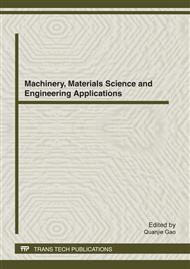p.563
p.569
p.575
p.579
p.585
p.590
p.594
p.599
p.603
Microstructure and Mechanical Properties of 6061 Aluminum Alloy by Laser Welding with Filling Wire
Abstract:
The laser welding with filling wire (LWFW) could not only keep the advantages of laser beam welding (LBW), but also reduce the assembled accuracy before butt-welding and improve the weld quality significantly. In present work, the microstructure and mechanical properties of 6061 aluminum alloy sheet by LWFW have been studied. The results show that the main microstructure characteristics of joint by LWFW are columnar microstructure near the fusion zone and the equiaxed dendritic grains in the center of the weld. And the boundaries of those grains become unclear after the heat treating. A large quantity of ageing strengthening particles precipitate dispersedly during the process of the heat treating, which cause that the average microhardness value of joint by LWFW could be improved significantly after the heat treating. The ultimate strength and the yield strength of 0.2% of the joints could reach the level of the base metal after the heat treating, while the elongation after fracture of the joints could reach 83.3% of the base metal. The tensile fracture presents typical ductile rupture. Therefore, the LWFW is an effective method for 6061 aluminum alloy.
Info:
Periodical:
Pages:
585-589
Citation:
Online since:
April 2012
Authors:
Keywords:
Price:
Сopyright:
© 2012 Trans Tech Publications Ltd. All Rights Reserved
Share:
Citation:


